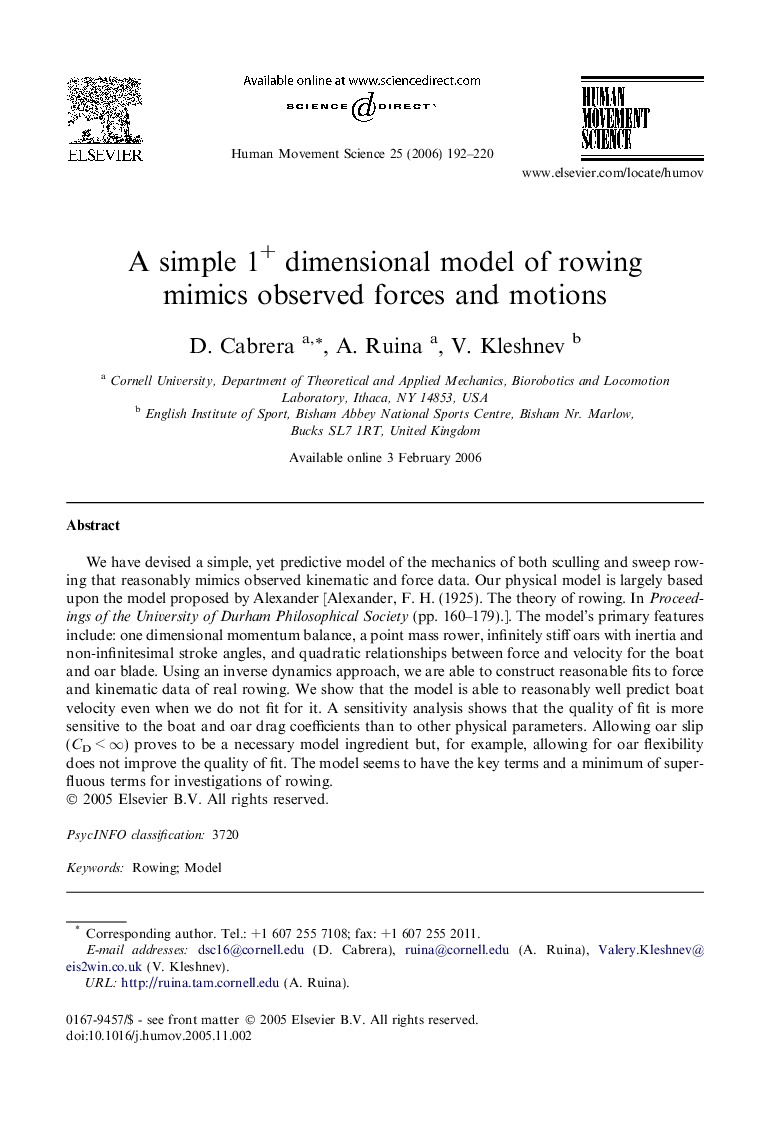| Article ID | Journal | Published Year | Pages | File Type |
|---|---|---|---|---|
| 928952 | Human Movement Science | 2006 | 29 Pages |
We have devised a simple, yet predictive model of the mechanics of both sculling and sweep rowing that reasonably mimics observed kinematic and force data. Our physical model is largely based upon the model proposed by Alexander [Alexander, F. H. (1925). The theory of rowing. In Proceedings of the University of Durham Philosophical Society (pp. 160–179).]. The model’s primary features include: one dimensional momentum balance, a point mass rower, infinitely stiff oars with inertia and non-infinitesimal stroke angles, and quadratic relationships between force and velocity for the boat and oar blade. Using an inverse dynamics approach, we are able to construct reasonable fits to force and kinematic data of real rowing. We show that the model is able to reasonably well predict boat velocity even when we do not fit for it. A sensitivity analysis shows that the quality of fit is more sensitive to the boat and oar drag coefficients than to other physical parameters. Allowing oar slip (CD < ∞) proves to be a necessary model ingredient but, for example, allowing for oar flexibility does not improve the quality of fit. The model seems to have the key terms and a minimum of superfluous terms for investigations of rowing.
